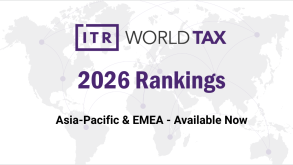In our last article, we summarised the changes to Ireland’s general anti-avoidance rule (GAAR) introduced by the Finance Act 2014 (the Act) which governs transactions entered into on or after October 23 2014. The Act also amended Ireland’s mandatory disclosure regime (MDR).
The MDR came into effect on January 17 2011. The legislation is supplemented by regulations and detailed Revenue guidance notes which must be read in conjunction with the legislation. The MDR’s purpose is to enable Revenue to obtain early information about certain tax schemes, including how they work, who has used them and ultimately to close down any such schemes that are in contravention of anti-avoidance provisions and the tax legislation generally. At the end of 2013, 18 schemes were disclosed under the MDR.
The MDR requires taxpayers to disclose information relating to certain types of schemes known as ‘disclosable transactions’ by the ‘promoters’ (generally tax advisers) of such schemes when the scheme has a tax advantage as one of the main benefits and when the scheme falls within a ‘specified description’ (that is, it has certain characteristics which are indicative of seeking to avoid tax).
The disclosure of a transaction does not amount to declaring the transaction is a tax avoidance transaction; it merely provides Revenue with information about the transaction to allow Revenue to examine the transaction.
Two changes have been made to the specified descriptions:
Previously, the confidentiality hallmark had two separate elements – the wish to keep the scheme confidential from Revenue, which was based on a subjective test, and the wish to keep the scheme private from other promoters, which was based on an objective test. These elements have now been combined into a single confidentiality hallmark with an objective test, asking whether or not it 'might reasonably be expected' that the user or promoter would wish to keep the scheme confidential. In addition, the legislation indicates two new underlying objectives for the promoter wishing to maintain confidentiality. These previously only applied to persons entering into transactions. Finally, concerning confidentiality, new Revenue guidance makes it clear that a promoter will not be obliged to disclose a scheme which is already known to Revenue; however, a scheme will only be deemed to have been ‘known to Revenue’ where it is evidenced from published Revenue technical guidance, or where the scheme was previously the subject of decided Irish case law.
A new hallmark has now been added concerning discretionary trusts. A transaction which has a trustee of a discretionary trust as party to the transaction is now brought within the scope of the legislation. That said, the schedule to draft regulations provides that transactions with certain trusts, for example a trust for permanently incapacitated individuals, need not be disclosed.
The following are some of the other main changes:
Similarly to the provisions in the UK, the new legislation provides for the introduction of a system whereby Revenue will assign a transaction number to any transaction disclosed under the regime. A promoter will be required to provide the transaction number to any person who uses the scheme.
Any person who enters into the scheme, or who seeks to obtain a tax advantage from it, is deemed to be a chargeable person and must include the assigned transaction number on the relevant tax return.
Where a transaction should prima facie have been disclosed under the MDR, a taxpayer will not be allowed to make a protective notification under the GAAR provisions. Such a protective notification allows taxpayers to protect themselves from the imposition of the surcharge and mitigation of interest. Therefore, there is now a link between a tax adviser’s obligations under the MDR and the taxpayer’s rights and obligations under the GAAR.
The obligation on marketeers to disclose information to Revenue has been extended. A marketeer is not the promoter but rather is generally an intermediary who makes marketing contact with the user of the scheme. Where a marketeer does not receive a transaction number from the promoter they will now be obliged to provide information regarding the name and details of the promoter and the transaction along with all the marketing material concerning the transaction. This information must be provided within 30 days of making initial marketing contact with the user.
Brian Duffy (brian.duffy@williamfry.com; +353 -1- 639 5156) is a partner at William Fry Tax Advisors – Taxand Ireland









